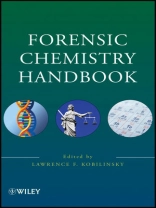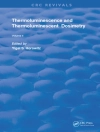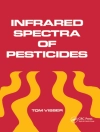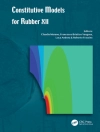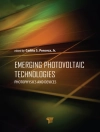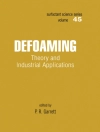A concise, robust introduction to the various topics covered by the discipline of forensic chemistry
The Forensic Chemistry Handbook focuses on topics in each of the major chemistry-related areas of forensic science. With chapter authors that span the forensic chemistry field, this book exposes readers to the state of the art on subjects such as serology (including blood, semen, and saliva), DNA/molecular biology, explosives and ballistics, toxicology, pharmacology, instrumental analysis, arson investigation, and various other types of chemical residue analysis. In addition, the Forensic Chemistry Handbook:
-
Covers forensic chemistry in a clear, concise, and authoritative way
-
Brings together in one volume the key topics in forensics where chemistry plays an important role, such as blood analysis, drug analysis, urine analysis, and DNA analysis
-
Explains how to use analytical instruments to analyze crime scene evidence
-
Contains numerous charts, illustrations, graphs, and tables to give quick access to pertinent information
Media focus on high-profile trials like those of Scott Peterson or Kobe Bryant have peaked a growing interest in the fascinating subject of forensic chemistry. For those readers who want to understand the mechanisms of reactions used in laboratories to piece together crime scenes—and to fully grasp the chemistry behind it—this book is a must-have.
İçerik tablosu
Preface xv
Contributors xxi
1. Forensic Environmental Chemistry 1
Anthony Carpi and Andrew J. Schweighardt
1.1 Introduction 2
1.2 Chemical Fingerprinting 4
1.3 Spatial Association of Environmental Incidents 18
References 20
2. Principles and Issues in Forensic Analysis of Explosives 23
Jimmie C. Oxley, Maurice Marshall, and Sarah L. Lancaster
2.1 Introduction 24
2.2 Sample Collection 25
2.3 Packaging 29
2.4 Sorting 30
2.5 Documentation 31
2.6 Environmental Control and Monitoring 31
2.7 Storage 33
2.8 Analysis 33
2.9 Records 36
2.10 Quality Assurance 36
2.11 Safety and Other Issues 37
Conclusion 37
References 38
3. Analysis of Fire Debris 41
John J. Lentini
3.1 Introduction 42
3.2 Evolution of Separation Techniques 43
3.3 Evolution of Analytical Techniques 47
3.4 Evolution of Standard Methods 49
3.5 Isolating the Residue 51
3.6 Analyzing the Isolated ILR 56
3.7 Reporting Procedures 101
3.8 Record Keeping 102
3.9 Quality Assurance 105
Conclusion 105
References 106
4. Forensic Examination of Soils 109
Raymond C. Murray
4.1 Introduction 110
4.2 Murder and the Pond 111
4.3 Oil Slicks and Sands 113
4.4 Medical Link 114
4.5 Examination Methods 114
4.6 Chemical Methods 127
4.7 Looking Ahead 129
References 130
5. Analysis of Paint Evidence 131
Scott G. Ryland and Edward M. Suzuki
5.1 Introduction 132
5.2 Paint Chemistry and Color Science 134
5.3 Types of Paint 139
5.4 Paint Evidence Interpretation Considerations 141
5.5 Analytical Methods 142
5.6 Examples 208
References 217
6. Analysis Techniques Used for the Forensic Examination of Writing and Printing Inks 225
Gerald M. La Porte and Joseph C. Stephens
6.1 Introduction 226
6.2 Ink 226
6.3 Ink Analysis 230
6.4 Office Machine Systems 242
Conclusion 247
References 248
7. The Role of Vibrational Spectroscopy in Forensic Chemistry 251
Ali Koçak
7.1 Introduction to Vibrational Spectroscopy 252
7.2 Infrared Spectroscopy 253
7.3 Infrared Sampling Techniques 255
7.4 Raman Spectroscopy 260
7.5 Raman Spectroscopic Techniques 262
7.6 Applications of Vibrational Spectroscopy in Forensic Analysis 264
References 265
8. Forensic Serology 269
Richard Li
8.1 Introduction 270
8.2 Identification of Blood 271
8.3 Species Identification 278
8.4 Identification of Semen 282
8.5 Identification of Saliva 286
References 289
9. Forensic DNA Analysis 291
Henrietta Margolis Nunno
9.1 Introduction 292
9.2 Methodology 296
9.3 Problems Encountered in STR Analysis 307
9.4 Methodology for mt DNA Analysis 316
References 322
10. Current and Future Uses of DNA Microarrays in Forensic Science 327
Nathan H. Lents
10.1 Introduction 328
10.2 What is a DNA Microarray? 328
10.3 DNA Microarrays in Toxicogenomics 332
10.4 Detection of Microorganisms Using Microarrays 334
10.5 Probing Human Genomes by DNA Microarrays 340
Conclusion 345
References 345
11. Date-Rape Drugs with Emphasis on GHB 355
Stanley M. Parsons
11.1 Introduction 357
11.2 Molecular Mechanisms of Action 357
11.3 Societal Context of Date-Rape Agents 361
11.4 Metabolism Fundamentals 363
11.5 Biosynthesis of Endogenous GHB 368
11.6 Absorption and Distribution of Ingested GHB 376
11.7 Initial Catabolism of GHB 377
11.8 Chemistry of GHB and Related Metabolites not Requiring Enzymes 380
11.9 Experimental Equilibrium Constants for Redox Reactions of GHB 380
11.10 Estimated Equilibrium Constants for Redox Reactions of GHB in Vivo 381
11.11 Different Perspectives on Turnover of Endogenous GHB are Consistent 384
11.12 Disposition of Succinic Semialdehyde 385
11.13 Conversion of Prodrugs to GHB and Related Metabolites 386
11.14 Subcellular Compartmentalization of GHB-Related Compounds 388
11.15 Comparative Catabolism of Ethanol, 1, 4-Butanediol, Fatty Acids, and GHB 389
11.16 Catabolism of MDMA, Flunitrazepam, and Ketamine 390
11.17 Detection of Date-Rape Drugs 390
11.18 Special Circumstances of GHB 395
11.19 Considerations During Development of Field Tests 396
11.20 Development of an Enzymatic Test for GHB 399
Conclusion 402
Notes 404
References 406
12. Forensic and Clinical Issues in Alcohol Analysis 435
Richard Stripp
12.1 Introduction 436
12.2 Blood Alcohol Concentration 437
12.3 Alcohol Impairment and Driving Skills 441
12.4 Field Sobriety Tests 443
12.5 Blood Alcohol Measurements 444
References 453
13. Fundamental Issues of Postmortem Toxicology 457
Donald B. Hoffman, Beth E. Zedeck, and Morris S. Zedeck
13.1 Introduction 458
13.2 Tissue and Fluid Specimens 460
13.3 Specimen Collection and Storage 466
13.4 Extraction Procedures 467
13.5 Analytical Techniques 467
13.6 Interpretation 470
Conclusion 475
References 476
14. Entomotoxicology: Drugs, Toxins, and Insects 483
Jason H. Byrd and Michelle R. Peace
14.1 Introduction 484
14.2 The Fly and Forensic Science 484
References 495
Index 501
Yazar hakkında
Lawrence Kobilinsky is currently the Chairman of the Department of Sciences and Professor of Biology and Immunology at John Jay College of Criminal Justice. An internationally renowned forensic scientist, he is a Fellow of the American Academy of Forensic Sciences as well as the New York Microscopical Society. He has published extensively in the areas of identification and individualization using protein genetic markers and DNA analysis, and is the coauthor of Wiley’s
DNA: Forensic and Legal Applications.
